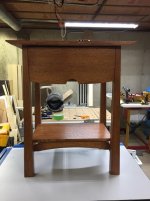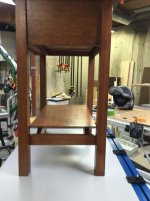Locks14
Member
- Joined
- Apr 19, 2015
- Messages
- 290
JD2720 said:I have both Dominos. I still use the biscuit jointer more than the Dominos. Both Dominos & biscuit jointers play very important rolls in my work.
I believe it has been stated here before. If Festool sold a biscuit jointer, it would also be a have to have, can't do with out tool.
Exactly! If it isn't Festool, it isn't worthy, syndrome. People get obsessed with buying the "green & black", obsessed with new Systainers they can neatly stack on top of each other and admire. Obsessed with the plug it cords and somehow think any other tool outside the "system" is simply inferior.
As a side note, I am an enthusiastic amateur photographer. I particularly like Fuji's X range of cameras.
Previously the cameras had what some considered slow autofocus, a poor flash offering and not enough magapixels. If anyone suggested these were shortcomings they would be shot down by fanboi's who stated such things were not necessary because the spirit of the X range of cameras was retro, slow, methodical photography, not cutting edge technology.
A few weeks ago a brand new camera was introduced that addressed a lot of the short-comings. Now, guess what? Everyone wants this new camera and all the new things it offers.



